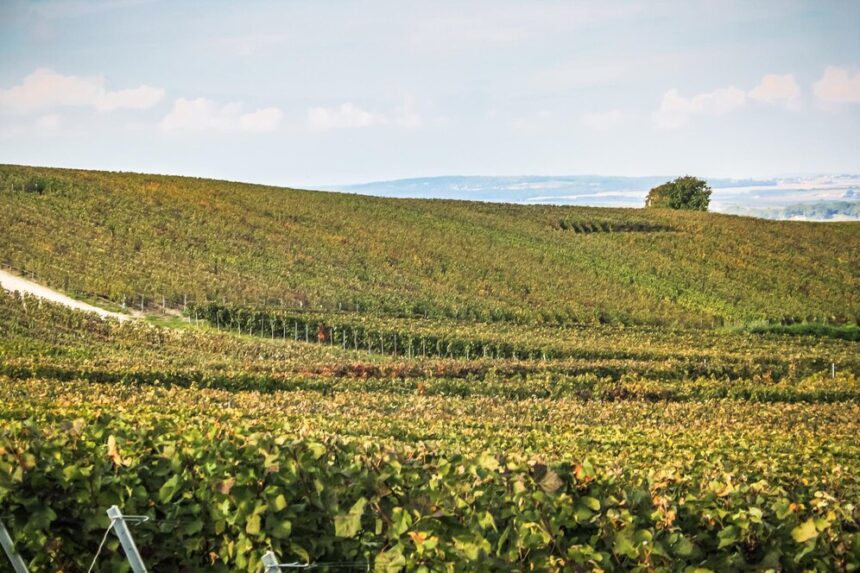Establishing a vineyard can be a rewarding investment, especially in regions with a suitable climate for grape cultivation. However, setting up a vineyard requires significant capital, careful planning, and time before the farm starts yielding a profit. The cost of establishing a vineyard is influenced by several factors, such as location, grape variety, and the type of production (wine grapes vs. table grapes). This article outlines the various costs associated with establishing a 1-hectare vineyard, helping potential vineyard owners better understand the financial commitments involved.
Key Factors Affecting Vineyard Establishment Costs
Before delving into the specific costs, it’s important to understand the key factors that influence the overall investment required for a vineyard. These include:
- Location: The suitability of the land, including its climate, soil quality, and topography, plays a critical role in the success of a vineyard. Regions with ideal conditions for grape growing may have higher land costs, but they can yield better returns in the long run.
- Grape Variety: The type of grape variety chosen for cultivation (e.g., red vs. white, wine grapes vs. table grapes) will impact costs. Some grape varieties may be more expensive to source and establish, while others may be more resilient and easier to manage.
- Land Preparation: The condition of the land will also determine the amount of work and cost involved in preparing the site for planting.
- Labor: Labor costs for planting, maintaining, and harvesting the vineyard can vary depending on the size of the operation and the level of mechanization used.
Breakdown of Costs for Establishing a 1-Hectare Vineyard
Establishing a 1-hectare vineyard involves several stages, including land preparation, purchasing materials, planting, and ongoing maintenance. Below is an estimated breakdown of the costs involved.
1. Land Acquisition and Preparation
- Land Costs: The cost of acquiring land for a vineyard can vary greatly depending on location. In well-established wine-growing regions, land prices can be high. For example, prime vineyard land may cost anywhere from R50,000 to R200,000 per hectare, depending on its proximity to popular wine-growing regions.
- Land Preparation: Preparing the land for planting involves clearing the land, tilling the soil, and improving soil health through organic matter or fertilizers. This can cost between R15,000 to R30,000 per hectare, depending on the soil condition and the amount of preparation required.
- Soil Testing and Amendments: Soil testing is essential to determine the soil’s nutrient profile and pH level. Based on the results, amendments such as lime, compost, or organic matter may be needed. The cost of soil testing and necessary amendments typically ranges from R5,000 to R10,000 per hectare.
2. Vineyard Infrastructure and Setup
- Trellising and Support Systems: Vineyards require trellising systems to support the grapevines as they grow. The cost of installing a trellis system depends on the type of structure used (e.g., VSP or bilateral cordon systems). The cost can range from R30,000 to R50,000 per hectare, depending on the materials used (wood, steel, or wire) and the complexity of the setup.
- Irrigation System: While grapevines are drought-tolerant, an irrigation system is necessary to ensure consistent water supply, especially in dry regions. Drip irrigation is the most efficient method for vineyards. The installation cost of a drip irrigation system typically ranges from R20,000 to R40,000 per hectare.
- Planting Materials (Vines): Purchasing quality grapevine saplings is a significant expense. On average, one hectare of vineyard requires about 3,000 to 4,000 vines, depending on planting density. The cost of vines can range from R25,000 to R45,000 for 1 hectare, depending on the grape variety and source.
3. Planting and Establishment
- Planting Labor: Planting grapevines requires skilled labor to ensure proper spacing and correct planting depth. Labor costs for planting can range from R10,000 to R20,000 per hectare, depending on local wage rates and the scale of mechanization.
- Fertilization: The initial fertilization is essential for establishing healthy vines. Organic or chemical fertilizers may be applied, costing between R5,000 and R10,000 for the first year of growth.
- Weed Control and Mulching: Managing weeds in the early stages of vineyard establishment is crucial for vine growth. Organic mulching, herbicides, or mechanical weeding may be necessary. This can cost around R5,000 to R10,000 per hectare.
4. Maintenance and Ongoing Costs
- Pruning and Training: Once the vines are established, they require regular pruning to maintain healthy growth and yield. Annual pruning and training costs typically range from R8,000 to R15,000 per hectare.
- Pest and Disease Management: Pests and diseases must be managed throughout the vineyard’s life. Integrated pest management, including natural predators and organic sprays, can cost between R5,000 and R10,000 per hectare per year.
- Water and Irrigation Maintenance: While the initial irrigation system installation is a significant cost, regular maintenance of the system and water usage can cost between R5,000 and R8,000 per hectare annually.
- Labor: Ongoing labor costs, including harvesting, vineyard maintenance, and general management, can range from R20,000 to R40,000 annually per hectare, depending on the level of mechanization and labor availability.
5. Other Costs
- Farm Infrastructure: Additional infrastructure such as storage facilities, machinery, and equipment can add significant costs. For example, tractors, harvesters, and storage sheds can cost between R50,000 and R150,000, depending on the size and type of equipment.
- Miscellaneous Costs: Other costs such as insurance, marketing, and administrative costs should be considered in the overall budget. These can vary, but expect to spend approximately R10,000 to R20,000 annually for these expenses.
Total Estimated Cost for Establishing a 1-Hectare Vineyard
Based on the above breakdown, the total cost to establish a 1-hectare vineyard can range from approximately R150,000 to R300,000 in the first year, depending on factors such as land costs, vineyard setup, and grape variety. Subsequent years will involve ongoing maintenance costs of between R40,000 and R80,000 per hectare per year, which will vary depending on yield, pests, and management practices.
Establishing a 1-hectare vineyard is a significant financial investment, but it can also offer substantial returns if managed effectively. The initial setup costs are high, but with the right planning, proper care, and attention to detail, a vineyard can become a profitable business. The first few years will require patience, as grapevines typically take 3 to 4 years to begin producing quality fruit for wine or table grapes. However, with consistent yields and high-quality grapes, vineyards can offer long-term profitability, especially in South Africa’s ideal grape-growing regions.







